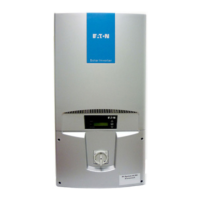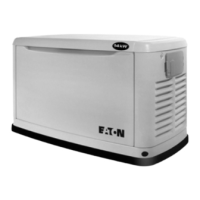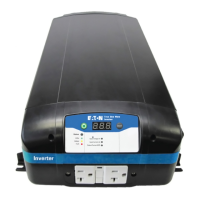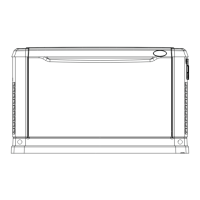General
1 Only mount the Matrix 2000 Inverter in either an open-frame relay rack or an enclosed
cabinet. The Matrix 2000 Inverter is not designed for "bench top" or any other mounting
arrangement.
2 Before installing and using the Matrix 2000 Inverter, read all instructions and cautionary
markings on the equipment and all appropriate sections of this guide. Be sure to read all
instructions and cautionary markings for any equipment attached to this unit.
3 This unit is designed for indoor use only. Do not expose the equipment to rain, snow, or
spray.
4 To reduce the risk of fire hazard, do not cover or obstruct the ventilation openings. Do not
install the equipment in a zero-clearance compartment.
5 Use only attachments recommended or sold by the manufacturer. Doing otherwise may
result in a risk of fire, electric shock, or other injury.
6 To avoid a risk of fire and electric shock, make sure that existing wiring is in good
condition and is not undersized. Do not operate the equipment with damaged or
substandard wiring.
7 Do not operate the equipment if it has been damaged in any way.
8 The Earthing System of the AC output from the inverter will change depending on
whether it is in Mains Priority or Battery Priority (DC supply) mode. When in Mains
Priority the AC output earthing system is the same as the AC supply network. When in
Battery Priority the AC output earthing system is floating and the Neutral system
arrangement at the Inverter output becomes “insulated” (IT), meaning both L1 and L2
being isolated from earth. This is the consequence of a requirement to isolate the input
AC terminals when operating in Battery priority as the AC input is made via a pluggable
connector. Due to EMC capacitors between L1 and L2 and earth, it is possible to measure
half the nominal output voltage between L1 or L2 and earth. This is expected and only
presents a low energy source.
9 Due to the earthing system outlined above, local electricity regulations of certain
countries may mandate the fitment of an Insulation Monitoring Device (IMD) on the
output, and/or the fitment of equipotential bonding conductors between all
simultaneously accessible exposed conductive parts of fixed equipment and extraneous
conductive parts Check with your local regulations.
10 It is not permitted to bond L1 or L2 to earth on the output.
